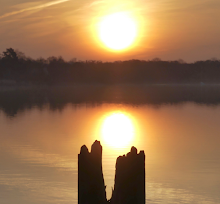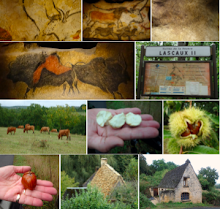An early, grey, overcast, and rainy Sunday morning.
A splendid time to pay a visit to Our Lady of Paris.
Notre-Dame de Paris is considered one of the finest examples of French Gothic architecture.
With c. 14.000.000 visitors annually is it definitely worth being early, so I entered at 8,
– and I was able to enjoy the tranquility inside this grand cathedral before the first morning mass commenced.
Notre-Dame was built from 1163 and onwards. The popular gargoyles on the facades are, however, recent elements added during the restoration of the cathedral c. 125 years ago.
Outside Notre-Dame and in front of the towers is the insignificant stone in the pavement marking the "ground zero" of all maps of France. From this very point all distances are counted. This is the centre of the French universe.
Close by the cathedral, a small outdoor market opened selling live birds (poultry, pigeons, quails, parakeets, canaries, budges and similar types of caged birds). The cold and rainy weather was, however, not stimulating for the business, – and the birds seemed disappointed too.
In the Metro this add tried to convince Parisians to learn at least some English. The shoulder tattoo is a wonderful example of "Franglish" [it reads: I lo ve English].
During the afternoon we drove to the 13th arrondissement to visit yet another museum. In 1447, the Gobelins brothers established their watermill driven dye works on the banks of the small river Bièvre. They soon began supplying weavers with wool dyed in all colours.
Because of this, a skilled production of big carpets for walls or floors was initiated by the Gobelin brothers, – and ever since woven tapestries have been known as "gobelins".
 |
| Joan Miro, 1978. Hirondelle d'amour. |
We visited the Manufacture des Gobelins at the very same address (42 Avenue des Gobelins) to view an exhibition of their tapestries from 1918-2018.
 |
| Henri Matisse, 1948. La Femme au Luth. |
 |
| Pablo Picasso, 1968. Femmes à leur Toilette. |
 |
| Nicolas Schöffer, 1974. Murluz. (top) and Marie-Claude Bugeaud, 2014. Plié-déplié. |
An interesting and colourful demonstration of the ancient art of weaving used in an modern context.
This evening we went to a concert in the Gothic shrine Sainte-Chapelle adjacent to the Palais de Justice at Quai des Orfevres. This unusual church is a royal chapel from 1248 within the medieval Palais de la Cité, then the residence of the Kings of France.
The interior is stunningly beautiful. 15-m-high stained glass windows fill out three sides of the nave.
The concert was performed by a sextette of extremely skilled French musicians who played compositions of Pachabel and Vivaldi.
The performance was superb, the acoustics impeccable and the setting was sublime.
A wonderful evening to be remembered !







































